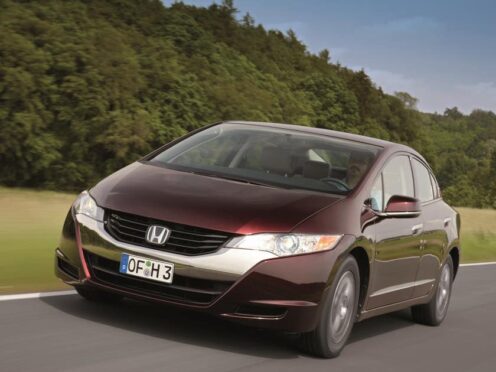Hydrogen fuel cell technology could be the answer to all motorists’ prayers – it offers the promise of zero-emission motoring with the ease and practicality of internal combustion-engined vehicles.
However, even though hydrogen sounds like the answer, it has never caught on in passenger vehicles, mainly because of the hurdles the technology has been trying to jump through.
Production costs are high, a lack of government funding for infrastructure expansion hasn’t helped and the vehicles available come with very hefty price tags attached to them.
Currently, there are only two hydrogen fuel cell vehicles on the market, and as of March 2023, only 15 hydrogen filling stations were in the UK.
Does it all mean that hydrogen-powered cars are only a recent creation? Well, dig beneath the surface and you’ll find that there have been many hydrogen-fuelled vehicles before and though uptake is steady, they are still catching the eye of car manufacturers.
Here is our list of the current and past cars that have used hydrogen fuel cell technology.
Present:
Toyota Mirai: £49,995 to £64,995

The Toyota Mirai is now in its second generation and is one of the most well-known and recognisable fuel cell electric vehicles on sale.
Originally launched in 2015, the Mirai offered car buyers a taste of the hydrogen world. It could do 300 miles on a full tank of hydrogen and would take no longer than a few minutes to fill up – as long as you had a hydrogen filling station nearby.
The second generation car came out in 2021 and was better looking and cheaper, starting at just under £50,000, while more range and increased power made the whole car better.
The new Mirai can do 400 miles on a tank and produces 178bhp from its electric motor, however, its small boot and cramped rear seating don’t make it a very practical car nor does the slow 0-60mph time of 8.8 seconds make it a fast one either.
But the Mirai drives really well for a very heavy and bulbous car, with decent steering and not too much body roll in the corners.
Hyundai Nexo: £65,995 to £69,495

The only other new car today that offers hydrogen power is the rather expensive Hyundai Nexo.
The Nexo has been around since 2018 and in that time, hardly anyone has bought one.
It offers 414 miles on a tank and is priced from £65,995, and with its direct competitor from Toyota £16,000 cheaper, makes this very small market almost a one-man-band.
But, where the Nexo falls down in one area, it pulls itself up in other areas. The drive in the Nexo is good, there is plenty of grip around the corners and it’s very well refined, but with a slow 0-60mph time of nine seconds, it’s not going to be scaring Teslas any time soon.
Past:
Honda FCX Clarity

Back in 2008, Honda showed us the FCX Clarity. Originally only sold in Japan and the Californian market, Honda used the FCX Clarity to set the ball rolling for the mass production of hydrogen fuel cell passenger vehicles.
Then in 2017, Honda released the second generation FCX clarity fuel cell exclusively to the Californian market. Not only that, they were available with only 12 approved Honda dealers, one in Sacramento, six in Southern California and five in San Francisco.
The second generation car came with 139bhp and had a range of 366 miles on a tank, however, Honda never brought the FCX Clarity to the European market.
Hyundai iX35 FCEV

Another Hyundai on this list is the ix35 FCEV. Hyundai has a history of producing fuel cell vehicles in concept form but has frequently made production-ready hydrogen cars too. The ix35 FCEV was an experiment to see if the mass markets could adapt to another battery-electric alternative.
In 2015, Hyundai made 1000 examples of the ix35 FCEV and 250 were in active service throughout 11 European countries.
The ix35 FCEV came with a fuel cell motor that produced the equivalent of 134bhp, had a hydrogen capacity of 144 litres, did 100mph and could manage 369 miles on a single tank.
Mercedes F-Cell

You may think that this list is dominated by Japanese and South Korean manufacturers – but Germany has also taken hydrogen research and development seriously, too.
Back in 2003, Mercedes got hold of an A-Class long-wheel-base and created the F-Cell. The A-Class F-Cell came with an 87bhp electric motor and had a range of 99 miles – poor by modern standards but impressive for more than two decades ago.
In 2004, four F-Cell A-Class’ were delivered to Deutsche Telekom and BEWAG Vattenfall Europe under their Clean Energy partnership project – which were the first fuel stations to use hydrogen filling pumps in Europe.
